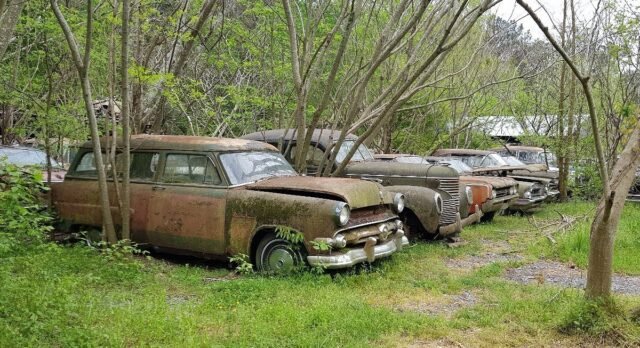Old cars in Victoria often end up taking valuable space in garages, driveways, or even backyards. Many vehicle owners are unsure of what to do with a car that no longer runs, has been damaged beyond repair, or simply isn’t worth the cost of fixing. What many don’t realise is that even wrecked vehicles still hold value through proper salvage and recycling. In this blog, we explore the full journey of an old car—from the moment it’s decommissioned to how its parts and materials are reused across industries.
What Happens to an Old Car After It’s Collected?
Once a car is no longer roadworthy, it typically starts its salvage journey with a removal service. These services collect the vehicle from the owner’s location and transport it to an authorised dismantling facility. The process begins with documentation checks and an initial condition assessment.
The first major step is depollution—removing all potentially hazardous fluids such as engine oil, brake fluid, coolant, and fuel. These liquids are either safely disposed of or recycled where possible. Next, airbags and batteries are removed, and reusable components like mirrors, headlights, and tyres are extracted for resale.
In cities like Melbourne, car owners commonly use services offering car removal Melbourne to handle this process swiftly and responsibly, often with free towing and same-day pickups.
Dismantling, Sorting, and Recycling Parts
After depollution, the car is systematically dismantled. Components such as the engine, transmission, radiator, and alternator are evaluated for reuse. These parts may be refurbished or sold as-is to mechanics or private buyers looking for affordable replacements.
Metals such as steel, aluminium, and copper are sorted and sent to metal recycling plants. Non-metal materials like plastics and rubber are also recovered, though their reuse may depend on condition and type.
Sell car for cash Melbourne options are increasingly popular because they provide a financial return while ensuring vehicles are handled according to environmental regulations. These services bridge the gap between convenience and sustainability.
Environmental Benefits of Car Salvaging
Car salvaging plays a vital role in reducing the environmental impact of vehicle disposal. Each year in Australia, approximately 500,000 vehicles reach the end of their life cycle. Without proper dismantling, these cars contribute to landfill waste and pollution.
By recycling usable parts and materials, car salvaging:
- Reduces mining and manufacturing demands
- Conserves natural resources
- Prevents fluid leaks and hazardous waste
- Reduces greenhouse gas emissions linked to new part production
This environmental contribution is especially important in Victoria, where sustainable practices are being promoted through local council initiatives and industry compliance guidelines.
Commonly Reused Car Parts and Their Applications
Several car components have strong resale value and find second lives in different vehicles or industries. Below is a table highlighting common parts and their reuse potential:
| Car Part | Typical Reuse |
|---|---|
| Engine | Refurbished for resale or used in compatible models |
| Transmission | Repaired and sold to mechanics or DIY restorers |
| Tyres | Resold if tread depth is safe; repurposed for mulch |
| Catalytic Converter | Extracted for rare metals like platinum |
| Battery | Recycled or resold if still functional |
| Doors & Mirrors | Used in accident repairs |
These examples show how old vehicles continue to serve value long after their road use ends.
Why Best Cash for Cars Is a Reliable Choice in Victoria
For Victorians seeking a responsible, quick, and rewarding way to dispose of their old vehicles, Best Cash for Cars has become a trusted option. Known for fast turnarounds, fair pricing, and fully licensed operations, they simplify the entire process—from vehicle pickup to final salvage. Their team ensures that all materials are recycled or repurposed in accordance with Victoria’s environmental standards, making them a dependable resource for eco-conscious car owners.
Legal and Compliance Considerations in Victoria
Car salvaging in Victoria must follow specific regulations governed by both state and environmental authorities. Operators must be licensed and meet standards for:
- Safe removal of hazardous substances
- Environmentally sound dismantling practices
- Accurate documentation and ownership verification
Failure to use a licensed operator may result in improper disposal, fines, or personal liability. To stay compliant, always ask for proof of licensing and certification before handing over your vehicle.
What You Need to Prepare Before Salvaging a Car
To make the process smooth, car owners should gather essential documents and prepare the vehicle for pickup. Here’s what you’ll typically need:
- Proof of vehicle ownership (e.g., registration papers)
- A valid photo ID
- Access to the car (must not be blocked or inaccessible)
- Removal of personal belongings
Once the paperwork is complete, the vehicle is towed away, and payment is made—often on the same day. Some companies also offer digital contracts for added convenience.
How Salvaged Materials Support Other Industries
The materials extracted from salvaged cars go far beyond auto parts. Recycled steel and aluminium are used in construction, packaging, and manufacturing. Recovered plastics can be processed into fencing, containers, or even furniture. Even the rubber from old tyres is ground into granules for sports fields or road surfacing.
By feeding multiple supply chains, car salvage adds value to sectors beyond automotive, supporting a circular economy that benefits all Victorians.
Read more about this topic on our site.




